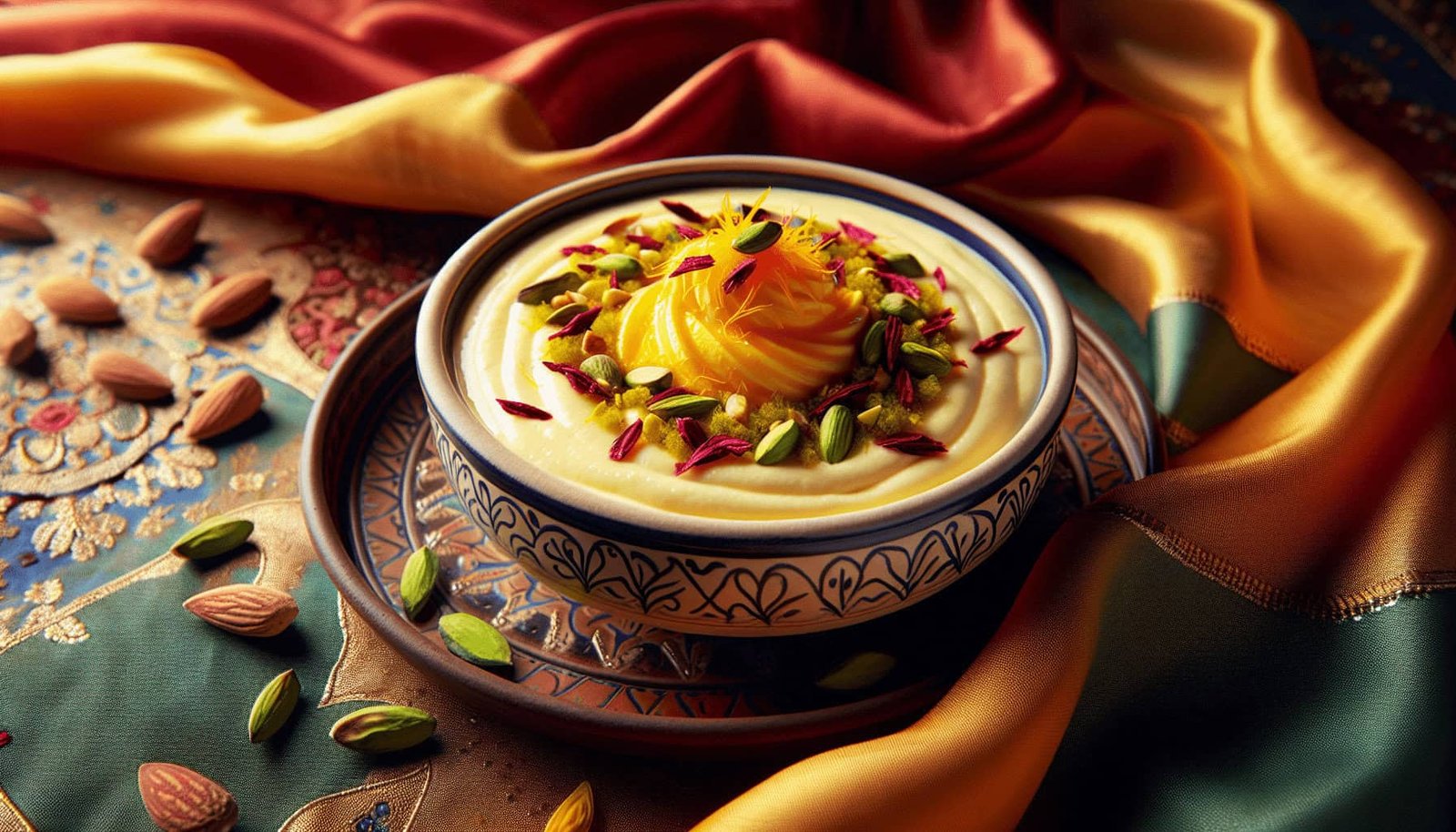Have you ever found yourself craving the creamy, sweet delight of Shrikhand and wondered what goes into making the best version of this classic Indian dessert? You’re about to find the answers to all your questions about this cherished treat. Shrikhand has been a part of Indian cuisine for centuries, often making its appearance during festivities and special occasions. But what’s the secret to crafting a batch that stands out?

Understanding Shrikhand: A Brief Introduction
Before jumping into the recipe, it’s crucial to understand what Shrikhand is all about. This dessert originates from the western parts of India, primarily from Gujarat and Maharashtra. Its essence lies in its simplicity—a luscious concoction made from strained yogurt (or curd) sweetened with sugar and flavored with a variety of ingredients like saffron, cardamom, and nuts.
The Traditional Appeal of Shrikhand
The traditional preparation of Shrikhand involves hanging yogurt in a muslin cloth to let the whey drain out slowly. This process can take several hours and allows the yogurt to thicken into what’s known as ‘Chakka.’ Once done, it’s mixed with sugar and a host of spices and flavorings. But we’ll get into the specifics a little later.
Cultural Importance and Versatility
Shrikhand isn’t just a dessert; it’s often integrated into the cultural fabric of various festive rituals. Despite its traditional roots, it has managed to adapt and evolve with modern flavors and presentations, showing its versatility and continued relevance.
Key Ingredients for Making Perfect Shrikhand
The quality of your ingredients can make or break your Shrikhand. Let’s look at what you’ll need, and why each component is crucial to achieving that perfect taste and texture.
| Ingredient | Quantity | Purpose |
|---|---|---|
| Yogurt | 1 kg | The base of Shrikhand, providing creaminess |
| Sugar | 250-300 gm | Sweetens the dish |
| Saffron strands | A pinch | Adds color and flavor |
| Cardamom powder | 1-2 tsp | Infuses aroma and enhances taste |
| Nuts (almonds, pistachios) | As desired | Adds crunch and richness |
Selecting the Right Yogurt
High-fat, creamy yogurt is ideal. It should be fresh, full-fat, and preferably homemade. This is because the quality of the yogurt directly affects the texture of the final dish. If possible, opt for organic varieties or try making yogurt at home to ensure the best quality.
Sugar: The Sweet Component
While regular granulated sugar works just fine, some recipes call for powdered sugar for a smoother consistency. Adjust the sugar to your taste—a tad more for those who have a sweet tooth or less if you prefer it mildly sweetened.
Exotic Flavors: Saffron and Cardamom
Saffron, although an expensive spice, is unparalleled in its ability to impart an intense yellow hue and a rich aroma to the dessert. Cardamom pairs excellently with saffron, adding warmth and depth. Their combination is what gives Shrikhand its distinguished traditional flavor.
Nuts for Texture
Chopped nuts like almonds and pistachios add not just texture but also a richness that complements the smoothness of the yogurt base. Toast them lightly for an enhanced nutty flavor.

Step-by-Step Guide to Preparing Shrikhand
Now that you’re familiar with the key ingredients, here’s how you can transform them into the best Shrikhand you’ll ever taste. Patience is crucial, as this recipe, while simple, requires some waiting time.
Preparing the Yogurt Base
Start with a large bowl, a muslin cloth, and a bit of patience. Here’s how to create that essential Chakka.
Hang the Yogurt: Place the muslin cloth over a bowl and pour the yogurt on it. Gather the edges and tie them tightly. Hang it over the sink or another bowl for 6-8 hours or until all the whey has drained. This step cannot be rushed, as the final texture of your Shrikhand relies on well-strained yogurt. If you wish, you can refrigerate it while it drains.
Check for Consistency: Once the yogurt has the texture of thick cream cheese, you’ve got your Chakka.
Flavoring the Base
Now, it’s time to mix in the flavors and sweetness:
Blend with Sugar: Transfer the Chakka into a bowl and begin blending in the sugar gradually. Use a spatula or a whisk to ensure that it dissolves evenly. The smoothness of the sugar is key to the final texture. You could use a hand mixer for this step if you wish.
Infuse with Saffron: Soak saffron strands in 1-2 tablespoons of warm milk for about 10 minutes. This releases the vibrant color and rich aroma. Blend the saffron milk into the Chakka and sugar mixture.
Add Spices and Nuts: Sprinkle in the cardamom powder and fold through the chopped nuts gently. Ensure that everything is distributed evenly without over-mixing, which might affect the texture.
Chill and Serve
Shrikhand is best served chilled. Allow it to refrigerate for at least 2-3 hours before serving. This also helps the flavors meld together beautifully. You can garnish with extra nuts or a few saffron strands before serving.

Tips and Variations for a Personalized Touch
Traditional isn’t the only route—creativity has much room in the world of Shrikhand. Here are some ideas and variations to inspire your next batch.
Playing with Flavors
- Fruit-Flavored Shrikhand: Mango Shrikhand, also known as ‘Amrakhand,’ combines mango pulp with the Chakka for a fruity twist.
- Berry Variations: Add strawberry or blueberry puree for a refreshing summer dessert.
Nutritional Additions
You can opt for healthier alternatives by experimenting with:
- Natural Sweeteners: Consider using honey or jaggery instead of sugar for a healthier version.
- Yogurt Variants: Use Greek yogurt to skip the straining process altogether, though the flavor might slightly differ.
Presentation Styles
- Serve your Shrikhand in small earthen pots for an authentic feel.
- Layer it with fruit and granola in a glass for a modern take and added texture.

Troubleshooting Common Issues
Creating the best Shrikhand might come with a few hiccups. Let’s address some common issues you might face and how to conquer them.
Too Runny
If your Shrikhand turns out runny, the yogurt likely contained too much whey. Ensure complete straining of the yogurt to achieve the desired consistency.
Overly Sweet
Adding sugar in small increments helps in controlling sweetness. Taste as you go, and remember that flavors can intensify as the Shrikhand chills.
Grainy Texture
Using powdered sugar can help avoid graininess. Additionally, ensure that all mix-ins, like nuts and saffron, are finely and evenly distributed.
Achieving the Perfect Balance
Balancing the Shrikhand takes time and practice. Ensure all flavors from the saffron and cardamom subtly shine without overpowering the cool creaminess of the yogurt.

The Final Word
By now, you should have a clearer picture of what makes Shrikhand not just a delightful dessert but an embodiment of cultural heritage expressed through flavors. The best Shrikhand is subjective and can vary depending on personal preferences. What matters most is savoring each bite of this sweet, creamy delight with the knowledge of what goes into making it so special.
Next time you find yourself hankering for a sweet treat, you’ll know just where to start and how to tailor the recipe to fit your unique taste. Now, aren’t you excited to try your hand at crafting this indulgent dessert?
